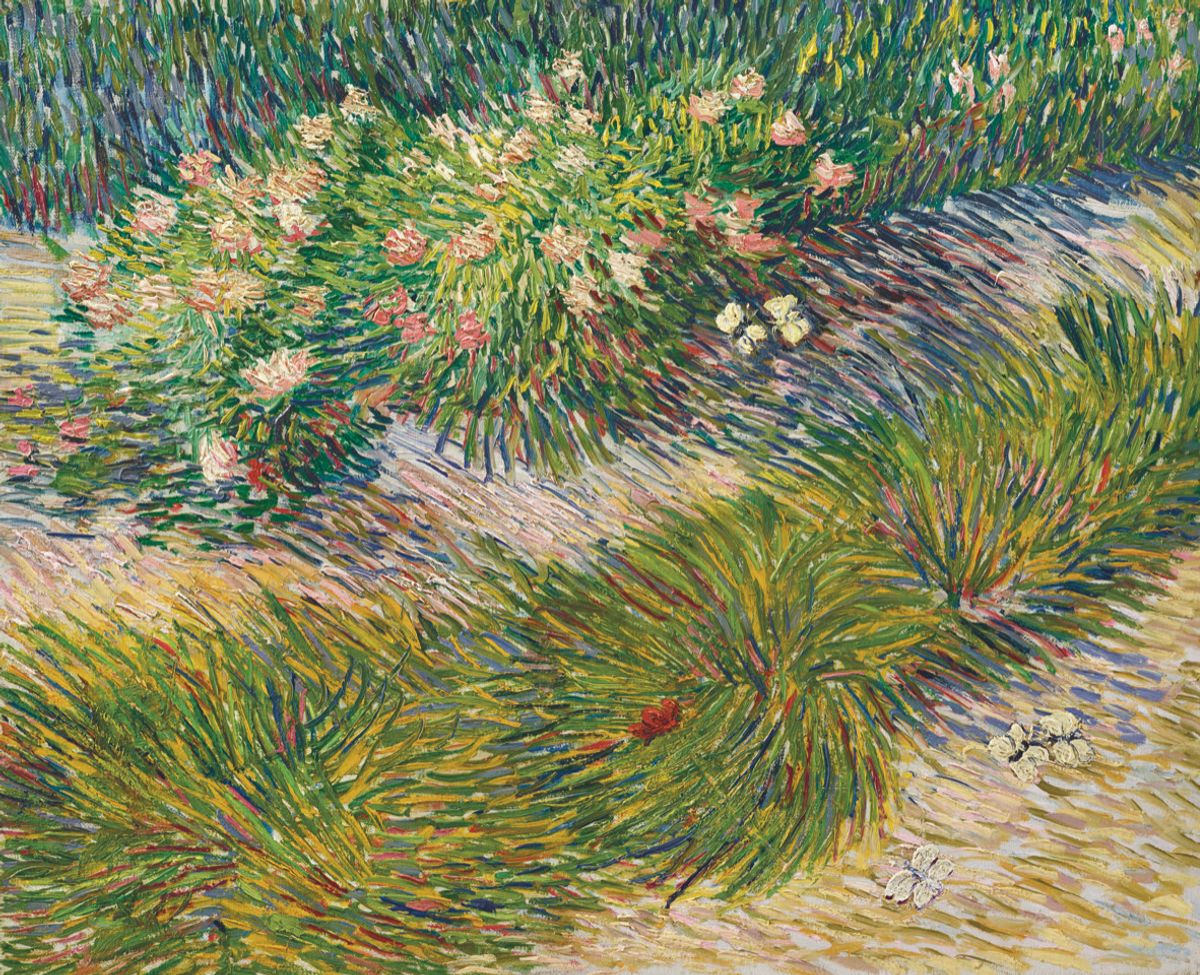Corner of a Garden with Butterflies (May-July 1887) comes up at Christie’s, New York on 16 May, estimated at $28m-$35m. This will break the record price for a Van Gogh work from the artist’s Paris period (1886-88), before his move to Provence. The present record is held by Garden in front of the Debray Farm (July-August 1887), which sold at Sotheby’s in May last year for $23m.
The landscape now coming up at Christie’s is a late springtime scene, painted in the Voyer d’Argenson park in Asnières, in the north-west outskirts of Paris. It is a bird’s eye view—or perhaps one should say butterfly’s view—of two rows of vegetation, with light pink flowers, gently swaying in a breeze.
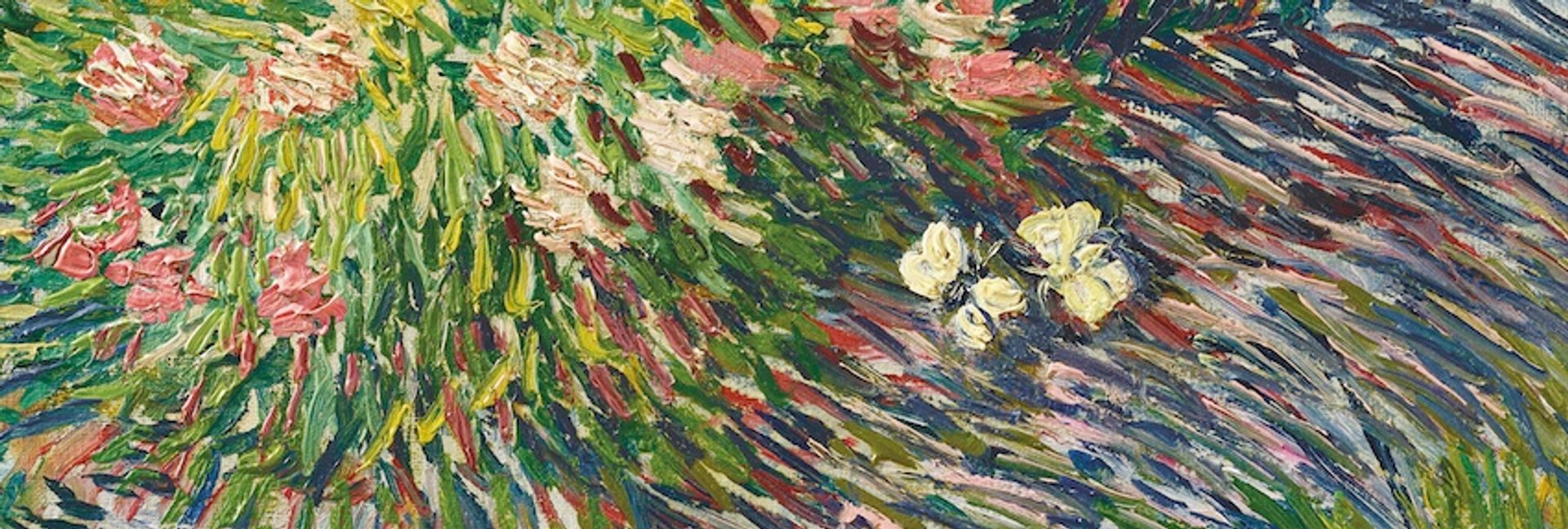
Van Gogh’s Corner of a Garden with Butterflies (Coin de jardin avec papillons) (detail) Christie’s Images Ltd 2024
The painting is enlivened with five flying white butterflies and one red one (with a possible second red one in the left centre). Van Gogh would hardly have been concerned about the species, but they could well have been small whites and red peacocks.
Corner of a Garden with Butterflies had come up at Christie’s in 2018, with an unpublished estimate of around $40m. But at the earlier auction it failed to meet its reserve price of $30m, so remained unsold. The owner, a European based in the UK, has now put it up for sale again. In the past six years, Van Gogh prices have risen.
This time an outside party has offered a guarantee and the painting is therefore certain to now sell, so it will fetch a record sum for a Van Gogh picture painted in Paris. The only question is whether it will go to a higher bidder or to the guarantor.
Van Gogh went on to depict butterflies in three other pictures, done a few years later, while he was staying at the asylum outside Saint-Rémy-de-Provence. These were painted in the garden for the male inmates, where he could escape from his fellow “companions in misfortune”, as he described them. For him, the garden represented a place of relative tranquility.
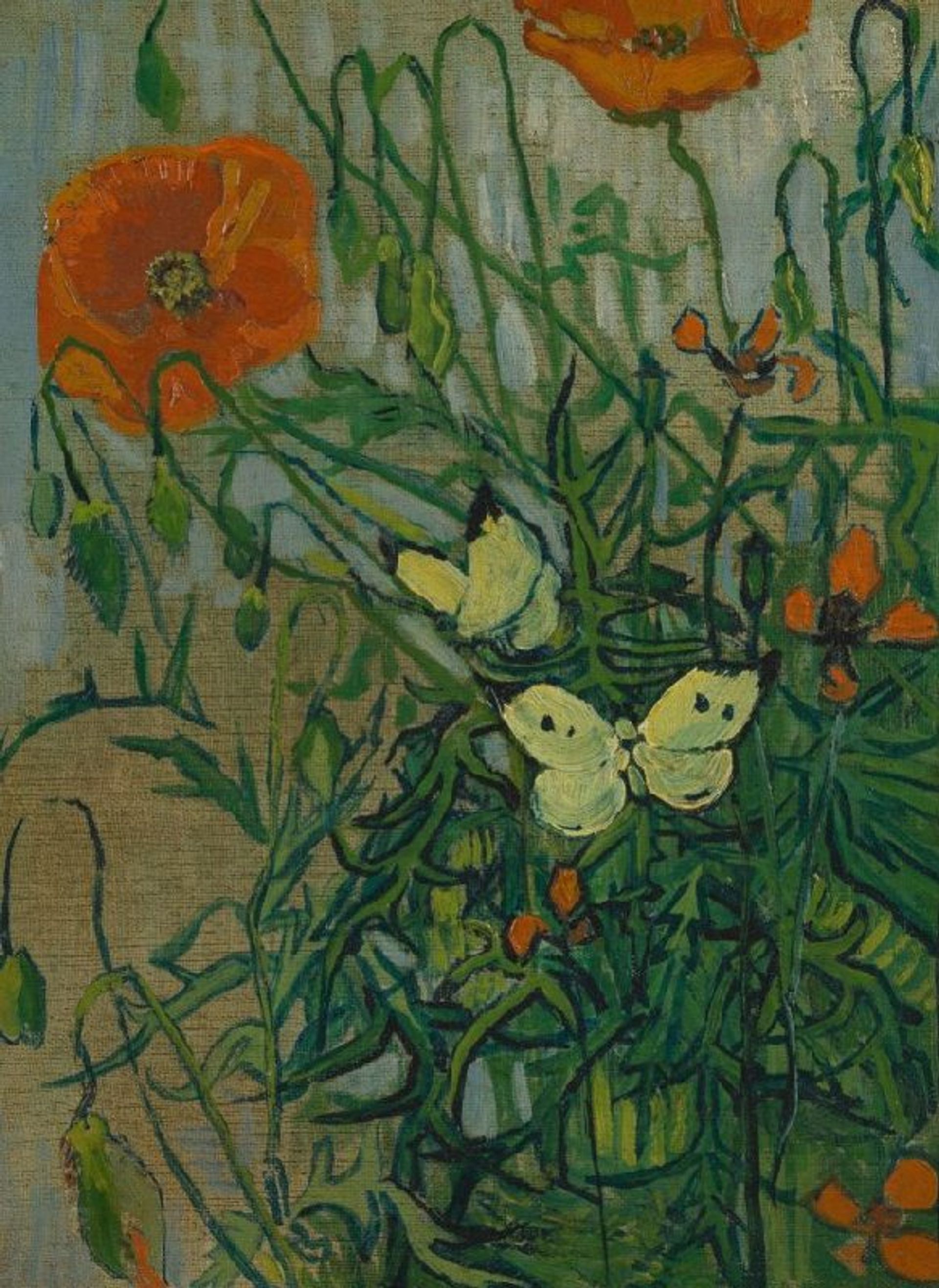
Van Gogh’s Butterflies and Poppies (May-June 1889) Van Gogh Museum, Amsterdam (Vincent van Gogh Foundation)
Butterflies and Poppies (May-June 1889) is an elegant composition, clearly inspired by Japanese prints, which Van Gogh greatly admired. In this work the pair of butterflies can be identified: they are large whites, with their distinctive double black spots.
Poppies flourished in Provence in May, their exuberant reds providing a striking contrast to the fresh green fields. These two complementary colours would immediately have struck a chord with Van Gogh.

Van Gogh’s Long Grass with Butterflies (April 1890) National Gallery, London
The following year Van Gogh painted two more works, just a few weeks before his departure from the asylum. Long Grass with Butterflies (April 1890) shows a wide view of the asylum garden, with a path just visible in the upper right. Although the three butterflies may not be immediately noticeable, once spotted they add movement to the composition.
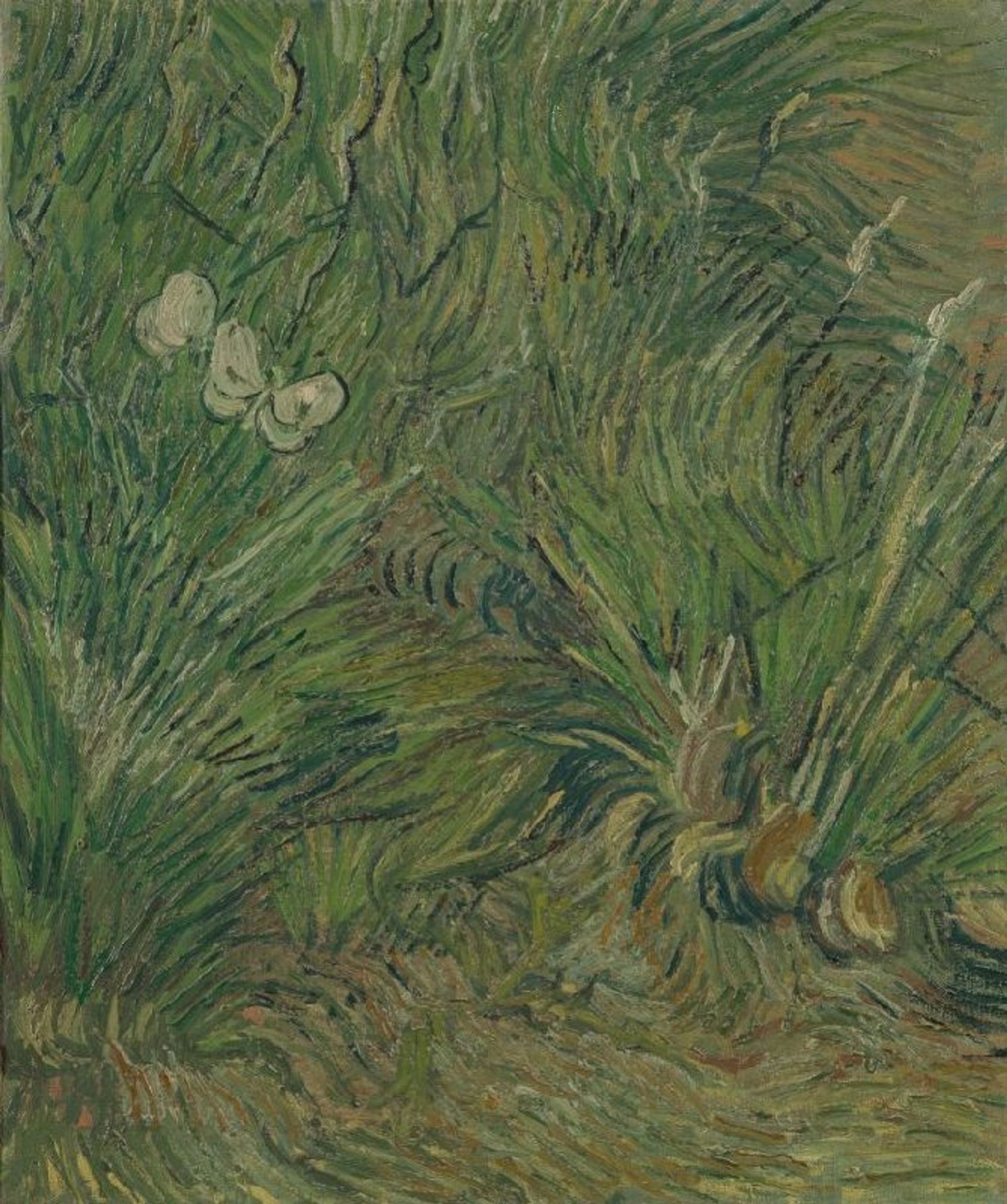
Van Gogh’s Garden with Butterflies (spring 1890)
Van Gogh Museum, Amsterdam (Vincent van Gogh Foundation)
Garden with Butterflies (spring 1890) almost represents a close-up scene from the Paris painting which is now at Christie’s, zooming in for a more detailed view. This suggests that at Saint-Rémy Van Gogh was partly inspired by memories of his earlier picture.
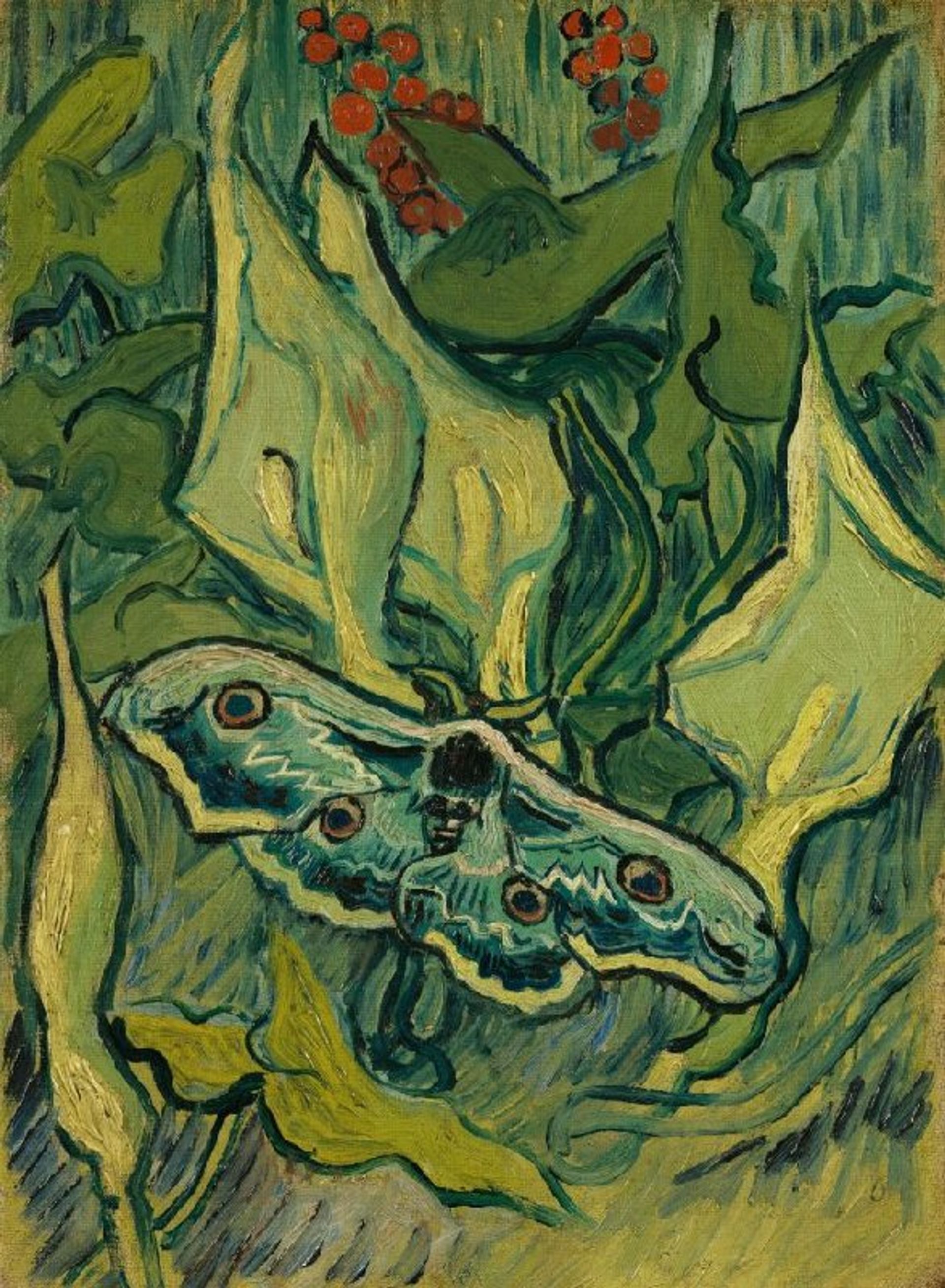
Van Gogh’s Giant Peacock Moth (May-June 1889) Van Gogh Museum, Amsterdam (Vincent van Gogh Foundation)
To these four paintings, we should also add Giant Peacock Moth (May-June 1889). The giant peacock, the largest European moth, has a wingspan of around 15cm, which explains why the artist was able to depict it in such detail (and slightly larger than the four arum lilies). The painting was done in the same dimensions and same style as Butterflies and Poppies, so they may have been conceived of as a pair.
Butterflies typically live for around two weeks, so they are often regarded as symbolising the transience of worldly existence. Although this may not have been at the forefront of Van Gogh’s mind, while painting them he must have been only too aware that these beautiful, ephemeral creatures can only be seen for a short period of the year, normally only on warm, sunny days.
Van Gogh’s own creative career was also tragically cut short. After painting the picture coming up at Christie’s, he would experience only three more spring seasons, taking his own life in July 1890.


